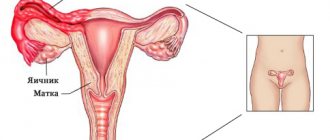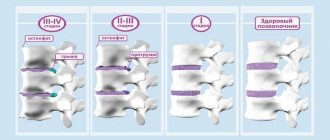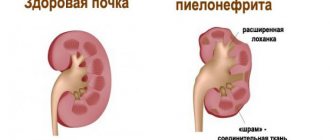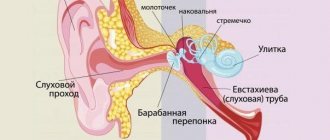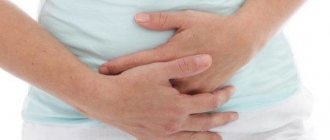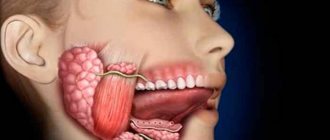Nephritis is inflammation of the kidney tissue.
There are many reasons for its occurrence - diseases of the urinary system, infectious, hormonal and other diseases. Treatment of the inflammatory process in the kidneys is individual, it is prescribed depending on the degree of symptoms. The doctor's recommendations are based on the diagnostic results. In some cases, this disease can become chronic.
How is the disease classified?
Inflammation of the kidneys is a whole group of nephritis (inflammatory processes), differing in symptoms, causes of development and treatment. Based on prevalence, there are two types of pathology: diffuse and focal. The first is characterized by complete damage to the glomeruli of the urinary organ, while the second is characterized by the formation of separate areas of the inflammatory process.
For kidney inflammation, there is another classification:
- Gomerulonephritis is damage to the glomeruli with impaired blood filtration and urination. Without the necessary treatment, the connective tissue replaces the glomeruli, resulting in chronic renal failure.
- Pyelonephritis - an infection that damages the parenchyma of the kidney, its pyelocaliceal system as a whole. Enters the organ with blood, lymph or through urination. Both chronic kidney inflammation and its acute form can develop.
- Shunt nephritis - surrounding the glomeruli with antibodies.
- Interstitial nephritis is damage to the tubules of the urinary organ and interstitial tissue.
All inflammatory kidney diseases are dangerous for the health and functioning of the urinary system as a whole. Therefore, you should carefully listen to your body and at the first signs or discomfort, consult a specialist.
Classification
The inflammatory process in the kidneys is classified according to the type, course and origin of the disease. Main forms of the disease:
- Pyelonephritis. One of the most common types of disease. It occurs most often in young and middle-aged women. Characterized by inflammation of the parenchyma, calyces and pelvis. It is a consequence of an infectious disease that affects the organs of the urinary system. Patients complain of frequent urination, pain in the lumbar region, nausea and fever.
- Glomerulonephritis. When it occurs, the inflammatory process is present in the glomeruli and renal tubules. Glomerulonephritis may be an autoimmune disease. Characteristic signs of the disease are weakness, abnormal stool, and dry mouth. May cause chronic failure of these organs.
- Interstitial. Affects tubules and intermediate tissues. Most often it occurs as a result of infection with viruses or bacteria, or poisoning with toxic substances. It is considered one of the most dangerous diseases, as it suppresses renal function and leads to an increase in the size of the organ. To avoid this, it is necessary to promptly and accurately determine the type of nephritis and prescribe appropriate treatment.
- Shunt. An autoimmune disease in which an accumulation of antibodies and lymphocytes occurs near the renal glomeruli, disrupting the process of urination. In some cases, joint damage develops as a result - arthritis.
- Ray. Inflammation of the renal tubules in this type of nephritis occurs due to ionizing radiation. The affected tissues gradually undergo atrophy, which leads to dysfunction of organs. Accompanied by high blood pressure and weakness.
Classification of forms according to the course of the disease:
- Spicy. Characterized by the sudden onset of severe symptoms. Occurs during a primary lesion or is a condition of exacerbation of a chronic form.
- Subacute. It has the same symptoms as the acute form, but is characterized by a slower development of the disease.
- Chronic. Develops after the previous stage and may be asymptomatic. Such long-term, low-grade inflammation of the kidneys gradually destroys the organ, in some cases leading to its complete dysfunction. This form requires regular maintenance therapy.
Types of jade by origin:
- Primary – develops as a result of hypothermia or infectious diseases.
- Secondary – is a complication of other diseases.
By localization:
- Focal - the inflammatory process affects individual areas of the organ.
- Diffuse - complete damage to the glomeruli, leading to their destruction.
By distribution:
- Unilateral - only one kidney is inflamed - right or left.
- Bilateral – characterized by inflammation of both kidneys at the same time.
What factors provoke the disease?
The causes of kidney inflammation are staphylococci, Escherichia coli, enterococci and other pathogens. Basically, they act in a complex manner. Cases of organ damage by one type of microorganism are rare.
Pathology is divided into primary and secondary forms. With kidney inflammation, symptoms and treatment vary precisely because of this indicator. The first form develops against the background of another disease: nephroptosis, amyloidosis. Secondary factors include the following:
- autoimmune diseases;
- heavy metal intoxication;
- alcohol abuse;
- development of a viral or bacterial infection;
- constant inhalation of toxic gases and vapors.
Causes of inflammation
The causes of kidney inflammation in women and men lie in the penetration of the pathogen - Escherichia, staphylococcus, enterococcus, etc. Most often, the pathogenic flora is mixed, only in 1/3% of cases inflammation is caused by one pathogen.
Conventionally, jades can be divided into primary and secondary. What symptoms of kidney inflammation will appear depends on this. More than 80% of patients seeking help at a medical facility are diagnosed with primary nephritis. It is based on several different diseases, for example, nephroptosis, amyloidosis.
The main reason for the development of the disease
As for secondary inflammation, the following factors may contribute to its development:
- abuse of bad habits;
- development of autoimmune diseases;
- poisoning of the body with heavy metals;
- staying in a room with toxic substances in the air;
- viral or bacterial infection in the body.
A special risk group includes people whose bodies are poisoned by chemicals or heavy metals. Inflammation of the kidneys or nephritis is not only an independent disease, but also a complication from other pathologies.
Classification
The diseased organ will make itself felt quickly
Inflammation in the kidneys is a large group of pathologies, each with its own symptoms, treatment features, and causes.
You can consider all this separately:
- Pyelonephritis is a disease in which the kidney parenchyma suffers; the causes are infection. The pathogen enters the kidneys in different ways, for example, through the ascending route, through the blood or lymph. The disease has two forms – acute and chronic. Signs of kidney inflammation in men and women include a feverish state, body temperature rises slightly and lasts for several days. There is a frequent urge to urinate, and the condition becomes weakened. When submitting urine for testing, an increased level of leukocytes can be detected.
- Glomerulonephritis is an autoimmune disease, the kidney glomeruli become inflamed, the process of urine excretion and blood purification is disrupted. As the disease progresses, the glomeruli will begin to be replaced by connective tissue.
- Interstitial nephritis - damage occurs to the renal canals and interstitial tissue.
- Shunt nephritis - antibody complexes begin to deposit around the renal tangles.
Paranephritis can also be classified as nephritis - this is a condition in which the perinephric fatty tissue becomes inflamed, but many doctors consider this to be incorrect.
Inflammation in women - symptoms
As practice shows, the symptoms of kidney inflammation in women are more pronounced, and all because they have different structural features of the body. The weakest link is the urinary system.
In other words, the urethra is shorter than in men, which is why it is much easier for infections to penetrate and achieve their goal.
Discomfort in the lumbar region
Women and men can also have general signs of kidney inflammation; they appear when its nature is acute:
- the appearance of acute pain in the lower back;
- increased sweating;
- the presence of pain in the abdomen of a pulling nature;
- increased body temperature;
- symptoms resembling intoxication;
- frequent urge to urinate, pain when emptying the bladder;
- dizziness.
Sometimes the symptoms become noticeable to the naked eye, for example, when flakes appear in the urine or it becomes cloudy in color.
For chronic kidney inflammation, the symptoms are as follows:
- increased sweating at night;
- increased body temperature;
- general health worsens;
- the appearance of vomiting and nausea;
- lack of appetite.
If women have a history of cystitis or polycystic testicles, then they will become a provoking factor in the development of the inflammatory process.
Inflammation in men - symptoms
Blood may be present in the urine
When kidney inflammation develops, the symptoms in men may be different, not only those listed above.
Among them:
- the presence of blood streaks in the urine;
- the appearance of pain in the lumbar region;
- urine smell, cloudiness;
- Despite the frequent urge to urinate, difficulties may arise when emptying.
Symptoms of kidney inflammation in men can appear simultaneously with symptoms of prostate adenoma, especially in older age.
Symptoms in children
Kidney inflammation can occur not only in adults, but also in children.
Moms or dads should pay attention to the following symptoms:
- when trying to empty the bladder, the child begins to cry;
- body temperature rises;
- urinary incontinence, or vice versa, any attempts to urinate do not lead to success;
- change in the color of urine, the presence of flakes in it;
- vomiting and nausea.
Many children are bothered by vomiting
A pediatrician can identify an inflammatory process in the kidneys. To confirm the diagnosis, you must undergo a number of examinations and pass the necessary tests. To avoid complications, treatment should begin as soon as possible.
Inflammation in pregnant women
Inflammation in the kidneys in this position occurs much more often, but why does this happen?
The thing is that the uterus begins to grow rapidly, and accordingly neighboring organs are compressed. The right ureter is primarily subject to compression, difficulties arise when passing urine, and inflammation begins to develop. An important factor is the fact that a serious hormonal imbalance occurs in the body.
As practice shows, kidney inflammation during pregnancy develops quickly, the clinical picture is clearly expressed. The first symptom to pay attention to is a significant increase in body temperature.
How severe the whole process will be depends on the type of pathogen. For example, when Staphylococcus aureus attacks, the form of the disease is severe. Bilateral inflammation is more severe, but, fortunately, it does not occur often.
The disease is especially acute in pregnant women
Other symptoms that may appear in pregnant women are:
- vomiting and nausea;
- feeling of pain in the lower back, abdomen and groin;
- pain on palpation of the kidney;
- discomfort when urinating;
- loss of appetite;
- muscle weakness.
How to treat kidney inflammation in women in this situation should be decided exclusively by the doctor; there is no question of any self-medication. If left untreated, the consequences can be serious. Antibiotics are required; in their absence, a cavity with pus may form in the kidney.
In addition, the following consequences may occur:
- premature birth;
- death of the fetus inside the womb;
- miscarriage.
Children born to mothers who have had nephritis may suffer from diseases of the kidneys, eyes and other organs.
How does the disease manifest itself in the fairer sex?
Symptoms of kidney inflammation in women are more pronounced. This is due to the physiological structure of the urinary system. Because of the short urethra, it is much easier for harmful bacteria to get to the bladder, and then to the kidneys.
Acute kidney inflammation manifests itself equally in women and men:
- increased sweating, temperature up to 40 degrees, chills;
- acute pain in the lumbar back;
- nagging pain in the lower abdomen;
- signs of poisoning;
- frequent dizziness and headaches;
- the appearance of cloudy urine, the presence of flakes in it;
- painful, frequent bowel movements.
With chronic manifestations, inflammation in the kidneys is characterized by increased sweating at night, general malaise and lack of appetite. Body temperature often changes, hypertension appears in combination with nausea and vomiting. The skin becomes dry and can change color to yellow.
Varieties
Pyelonephritis
Depending on the spread of the inflammatory process in the organ in women and men, the following types of illness are distinguished:
- focal. In this case, only a few small foci of inflammation are observed in the organ;
- diffuse. All renal glomeruli are affected. It is possible that inflammation of the adrenal glands may occur (due to the rapid spread of the inflammatory process).
By the term “kidney inflammation”, doctors mean a whole group of pathologies that differ in the localization of inflammation, the mechanism of progression and clinical picture. Clinicians distinguish the following types of ailments:
- pyelonephritis;
- shunt nephritis;
- glomerulonephritis;
- interstitial nephritis.
Pyelonephritis is an inflammation of the kidneys that progresses due to the penetration of bacteria into the organ. The tubules and pyelocaliceal apparatus are affected. This type of inflammation occurs in women, men and children more often than others. The main reason for the development of pyelonephritis is hypothermia. In women, it often progresses against the background of urolithiasis.
Glomerulonephritis is an autoimmune kidney inflammation in which the glomeruli become inflamed. As a result, the physiological process of blood purification and urine excretion is disrupted. If the disease is not treated with tablets and injectable medications, the glomeruli will soon begin to be replaced by connective tissue. The result of this process is the same - chronic renal failure.
Interstitial nephritis - inflammation affects the tissue located between the glomeruli and tubules, as well as the tubular apparatus of the nephrons. More often, the pathology progresses due to the pathogenic activity of bacteria or viruses. But there are frequent cases when this type of inflammation develops due to intoxication of the body with pharmaceutical substances.
Shunt nephritis - bacteria “attack” immune complexes located in the glomeruli. As a result, they attach to blood vessels and disrupt the functioning of the organ.
How does the disease manifest itself in men?
When kidney inflammation occurs in representatives of the stronger sex, along with the general symptoms indicated above, a number of special symptoms appear. Urine becomes of a specific smell and color. Streaks of blood appear in it. The stability of the urge to urinate is disrupted, and significant delay occurs. A stable pain syndrome develops in the lower back. For older people, a common diagnosis is prostate adenoma. As a result, damage to the kidney and inflammation of its entire pyelocaliceal system occurs.
Symptoms of kidney inflammation
Signs of kidney inflammation vary. The same disease can occur in different ways. Sometimes people suffer from nephritis in an asymptomatic form. The clinical picture also depends on the nature of the inflammation.
Typical renal syndromes:
- Uric. This symptom complex is characterized by a decrease in the amount of urine, hematuria (blood in the urine), leukocyturia (white blood cells in the urine) and other laboratory changes. There are no systemic signs of inflammation or other symptoms.
- Nephrotic syndrome includes proteinuria (loss of more than 3.5 g of protein per day in the urine), hypoproteinemia (low total protein in the blood), dyslipidemia (increased cholesterol in the blood) and edema.
- Nephritic syndrome is also characterized by proteinuria (loss of less than 3.5 g per day) and hematuria. Additionally, blood pressure increases.
All these syndromes are characteristic of different nephritis.
The following symptoms are also characteristic of inflammation:
- fever;
- chills;
- pale skin;
- urine the color of meat slop or other unnatural shade;
- increased frequency of trips to the toilet, pain and pain when urinating;
- rash all over the body;
- pain in the lumbar region.
In children, fever is more pronounced, in adults - pain syndrome.
What symptomatic characteristics of the disease are observed in children?
Inflammation of the kidneys in a child is expressed by incontinence or, conversely, lack of bowel movements. The process of urination is painful, which brings the baby to tears. The temperature is elevated, there is pain in the lower abdomen and lower back. The urine has darkened and there are flakes of other specific impurities in it. In combination, all the symptoms of kidney inflammation in children cause vomiting.
If parents notice at least one such sign of pathology, it is necessary to immediately show the child to a qualified physician.
Prevention
The main thing in prevention is to stop the infectious process in a timely manner. A simple cold or flu should not be taken lightly, because if the disease is not completely treated, kidney problems may appear.
Special attention should be paid to the sanitation of the oral cavity. Trivial caries is one of the causes of infection, which may well provoke nephritis.
Body thermoregulation should be monitored. You cannot overcool the body in the fall or veins. If you get wet in the rain, change your clothes to dry ones as soon as possible.
The main rule is a healthy lifestyle
Engage in strengthening your body. Many physical exercises increase its resistance and make it resistant to inflammatory processes in the kidneys and other important organs.
In childhood, immunomodulatory therapy with interferon drugs is carried out. The indications for this are as follows:
- preschool children;
- frequent inflammatory processes in the kidneys;
- pyelonephritis in a protracted form.
Remember, the kidneys are a vital organ, and it depends on you how healthy it will be. Timely treatment, timely diagnosis - all this will help avoid many complications.
How does the disease progress in women in an interesting position?
Nephritis is a common occurrence in pregnant women. When diagnosing a pathology, urgent hospitalization and treatment are necessary. After all, the threat extends not only to the health of the mother, but also to the unborn newborn. If the baby is affected inside the mother, he or she runs the risk of developing pneumonia or enterocolitis.
The pathology is provoked by compression of the pelvic organs due to the growth of the uterus, the presence of chronic diseases, and hormonal imbalances. How to relieve kidney inflammation in a representative of the fairer sex who is carrying a baby? It’s easier to protect yourself from this trouble. A woman should not get too cold, regulate her diet and carefully monitor her hygiene. At the first symptoms of deviation from normal health, even if it is a simple temperature, seek help from a qualified specialist.
Treatment methods
To carry out proper treatment, you must know exactly the cause of the disease, as well as its type. During an exacerbation, therapy is carried out in a hospital under the supervision of the attending physician.
When kidney inflammation develops, symptoms and treatment in women, just like in children and men, can be different. During the first days, it is recommended to provide the patient with bed rest, especially if the stage of the disease is severe.
Medications
Medicines for kidney inflammation in men, children and women are prescribed without fail.
The drugs may be the following:
- antibiotics;
- antihistamines;
- vitamin complexes;
- immunostimulants;
- calcium supplements, etc.
With properly selected therapy, the patient's condition quickly improves. Recovery comes quickly.
Antibiotics for treatment
What antibiotics will be prescribed depends on what bacteria are identified in the test results. If their type cannot be identified, broad-spectrum drugs are prescribed.
The most effective antibiotics:
| Name | Description |
Norfloxacin | This is an antibiotic with a wide spectrum of action. It reaches a high concentration in the blood half an hour after administration. |
Ciprofloxacin | This is a fairly popular drug and belongs to the group of fluoroquinolones. After administration, the growth and reproduction of bacteria is blocked, bacterial cells die. |
Ofloxacin | An antibiotic based on the component ofloxacin. The DNA gyrase enzyme is blocked, after which the process of cytoplasm destruction begins, all pathogenic microorganisms die. |
Furadonin | The medicine has pronounced antimicrobial activity, but is not an antibiotic. Protein synthesis in microbial cells is blocked, and the permeability of the cell membrane is disrupted. |
Furagin | Depending on what concentration was prescribed, bacteriostatic and bactericidal effects may occur. Pathogenic microorganisms produce fewer toxins, and the patient’s general condition improves. |
In addition to the drugs listed above, uroseptics can be prescribed, among them the following can be distinguished:
| Name | Description |
Nitrofurantoin | The medicine can be taken by both adults and children. The oxidation process is blocked, microorganisms die. |
| Furagin | The drug is absorbed by the intestines, the main active substance penetrates the lymph, and the spread of infection is blocked. |
Ersefuril | The drug stops the effects of harmful bacteria, causing them to die. The intestinal microflora is not disturbed. |
Nitroxoline | DNA synthesis in microbial cells is blocked, microorganisms cannot reproduce and die. |
Pimidel | The drug affects the urinary system. During the treatment, the DNA and RNA of bacteria are blocked, as a result of which they inevitably die. |
Norfloxacin | The main effect of the drug is to block the bacterial enzyme, as a result of which the process of protein synthesis is disrupted. |
On average, antibiotics need to be taken for ten days, but in rare cases, treatment can take several weeks.
Proper nutrition
A diet for an inflammatory process in the kidneys must be followed in order to reduce the load on an already affected organ. The diet should contain as many cereals, vegetables and fruits as possible.
Any protein sources should be put aside for the time being. If you want to eat meat, it is recommended to steam it.
Eat as many vegetables and fruits as possible
In cases where the patient’s blood pressure is elevated, doctors recommend trying to drink at least one and a half liters of water, mineral water, juice, fruit drink or compote per day. Products with diuretic properties are useful - watermelons or melons.
Important! Eating smoked, spicy and fried foods is prohibited. It is not allowed to eat salty and canned foods.
Traditional methods of treatment
Not only traditional, but also traditional medicine can be used for treatment.
These are mainly tinctures from medicinal plants:
- licorice, birch buds;
- linden, chamomile;
- sage, bearberry leaves.
Tinctures prepared from the herbs listed above relieve inflammation and improve the condition of the genitourinary system. However, before taking them, it is recommended to consult a doctor.
Surgery
If necessary, surgical intervention is performed
With the development of diseases that impair the outflow of blood, surgical intervention is required:
- tumor processes;
- urolithiasis disease;
- torsion of the ureters.
Surgery is necessary to restore patency of the urinary tract.
Possible complications
An inflammatory process in the kidneys can result in serious consequences for a person:
- development of bacteriotoxic shock;
- paranephritis - infection from the kidneys penetrates the fiber;
- formation of purulent foci in the kidney;
- renal failure.
One of the complications is kidney failure
Incorrect or no treatment at all can cause the patient to die. It is important to monitor your health, and if something happens, seek help in a timely manner.
How to identify the disease?
When diagnosing pathology, the patient is examined. It includes a general and biochemical blood test, urine examination, ultrasound of the urinary organ, MRI, CT and various functional urine tests. Often the doctor refers the patient to nephroscintigraphy.
During laboratory examinations, a general blood test shows an increase in the level of leukocytes, and in a biochemical study, an increase in protein metabolic products. TAM is distinguished by the presence of red blood cells, bacteria, protein and epithelial particles.
Folk remedies for treating illness
Special herbal decoctions and infusions will help relieve inflammation
In addition to traditional treatment, traditional methods of treatment can also help the patient with kidney inflammation. They include drinking special decoctions and infusions from plants such as chamomile, hawthorn, linden or rose hips. All of them have excellent bactericidal and diuretic effects, thanks to which they will effectively help the patient get rid of nephritis as soon as possible. However, you should know that self-medication for kidney inflammation is extremely dangerous. Uncontrolled use of herbal infusions can seriously harm your health. To protect yourself, buy herbal infusions only at the pharmacy, after consulting with your doctor about their composition and frequency of use.
What else can you do to treat kidney inflammation? In addition to a special diet, medication and folk therapy, the doctor may prescribe physiotherapy to the patient. Their complex, for kidney inflammation, includes carbon dioxide and sodium chloride baths, ultrasound and electromagnetic therapy. Also, in case of kidney inflammation, when the main symptoms are relieved with medication, the patient is recommended to prescribe sanatorium treatment. In a sanatorium that specializes in the treatment of kidney diseases and the process of restoring the body after kidney diseases, the patient will receive all the necessary procedures that will help him recover faster and recover from nephritis.
How is the disease treated?
Treatment of kidney inflammation is carried out only after determining its type, etiology and eliminating the cause of development. When an acute form of pathology occurs or an exacerbation of a chronic disease occurs, therapy is carried out exclusively within the hospital under the strict supervision of a doctor. Treatment includes medications, diet, regimen, and folk remedies. Sometimes the patient is disturbed by insignificant signs of the disease: fever, lower back pain. But you should not ignore the manifestations.
Traditional therapy
For kidney inflammation, antibiotics and uroseptics are used. After a complete examination, the doctor prescribes vitamins C, B, P, calcium, diuretics, immunostimulating drugs and cytostatics. It is also often necessary to take antihypertensives, antihistamines, substances that improve blood circulation and nutrition in the urinary organs, and glucocorticosteroids.
Drugs for kidney inflammation improve the patient’s condition after just one week of use if the pathology is diagnosed in a timely manner. Full recovery is guaranteed after a month of complex therapy. Therefore, it is best to consult a doctor for help at the slightest deviation from the health norm.
Proper nutrition
If the right or left kidney is inflamed, drink plenty of fluids if there is no swelling or hypertension. This is still water, freshly squeezed juices. Cranberry and lingonberry anti-inflammatory fruit drinks will be useful. The diet is aimed at unloading the work of the urinary organ. Therefore, you need to eat fruits, vegetables, cereals and bran bread. All dishes should be steamed or boiled. Meat and salt must be limited. Avoid spicy, salty foods and smoked foods. Do not use marinades, fried foods, a lot of spices and seasonings.
Watermelon, apples, pumpkin and melon will be useful as herbal diuretics. Citrus will saturate the body with vitamin C to strengthen the immune system.
Directions of the treatment process
Treatment of kidney inflammation depends on the cause and severity of the disease, as well as its form and type of development (acute or chronic). Effective therapy includes eliminating the symptoms or etiology of nephritis. If the immune system is involved in the formation of pathology, it may be useful to prescribe immunosuppressive drugs. Such drugs are, for example, glucocorticoids (cortisone). Patients with streptococcal glomerulonephritis are prescribed antibiotics.
Medication
High body temperature can be relieved with anti-inflammatory and antipyretic drugs. Injections cannot be given without a doctor’s prescription, as unforeseen consequences may arise. Antibiotics help kill germs.
Doctors recommend treating kidney inflammation with general therapeutic measures. These include reducing physical activity and eating a low protein diet. If water accumulates in the tissue (swelling appears), a low-salt diet and possibly diuretics help. Kidney inflammation can increase blood pressure, so the patient should take antihypertensive medications.
If glomerulonephritis does not cause discomfort and kidney function and blood pressure are normal, it is usually sufficient for the patient to be examined regularly by a doctor (including systematic blood and urine tests). If the kidneys are severely inflamed, end-stage renal failure may occur. In this situation, blood flushing (dialysis) or, as a last option, a kidney transplant is performed.
Surgical
Surgery is prescribed for end-stage renal failure or urolithiasis. For renal necrosis, unilateral or bilateral nephrectomy is performed. For urolithiasis, open surgery or laparoscopy is prescribed to remove the stone. Extracorporeal shock wave lithotripsy (ESWT) is an effective method for fragmenting small kidney stones.
Diet and folk remedies
You should take at least 2 liters of fluid daily and limit your daily protein intake. Further recommendations depend on the causative disease and the patient’s health status.
Attention! Rose hips, massages and other untested remedies (“Canephron”) are not recommended for use in acute kidney inflammation. According to scientific data, local hyperthermia can contribute to the spread of an infectious disease, so heating the kidney is prohibited.
What happens if the disease is not treated?
All kinds of complications if the disease is ignored are very dangerous for human health. Indeed, as a result of the lack of proper therapy, urosepsis develops (the spread of infection through the blood throughout the body), purulent inflammation of the kidneys, paranephritis (bacteria penetrate the tissue around the organ), bacteriotoxic shock or renal failure.
Lack of timely treatment or illiterate treatment can lead to the death of the patient. Therefore, you should not ignore the symptoms of the disease. Timely comprehensive treatment will help restore health in the shortest possible time: therapy with tablets for kidney inflammation, traditional medicine, diet, drinking and bed rest.
Complications
If left untreated, inflammation of the kidney tissue can cause muscle pain, intoxication of the patient’s entire body, severe swelling, fluid accumulation in some organs, and kidney failure.
All this significantly worsens the quality of life and condition of the patient. This pathology can lead to death. That is why timely treatment is necessary to prevent complications and further spread of infection from the kidneys.
Therapeutic diet
Following a therapeutic diet during therapy will help eliminate the disease quickly and without negative consequences. The basis of the diet is to reduce the load on the internal affected organ. The patient's diet should include fresh vegetables, as well as fruits, cereals, and bran bread. Nutritionists recommend strictly limiting the consumption of meat and dairy products, as well as salt.
If a woman suffers from hypertension, she is recommended to drink less fluid. Otherwise, it is important to comply with the required daily drinking regimen (2 liters). Instead of drinking water, you can drink decoctions of medicinal herbs (birch buds, horsetail, juniper, corn silk, bearberry, sage) or fruit drinks from cranberries or lingonberries; such drinks help relieve the inflammatory process in the body and have an active diuretic property.
Kidneys
In Latin, the kidney is called “ren”, and in Greek – “νεφρό” (nephro). They are shaped like beans. This organ is a pair. The kidneys are located at the posterior abdominal wall opposite the 11th thoracic vertebra. The right kidney is usually slightly lower than the left because it is adjacent to the liver. The kidney, in accordance with its main physiological purpose, is classified by scientists as part of the urinary system. The size of the kidney in an adult male is 11-12 cm in length, 5-6 cm in width and 3.5-4 cm in thickness. An adult woman's kidneys are slightly smaller than those of a man. The left kidney, as a rule, is larger than the right kidney in a normal person. The weight of an adult kidney ranges from 125 to 200 grams. The given figures are normal indicators for people leading a healthy lifestyle. The kidney structure looks like this:
How does acute glomerulonephritis manifest?
Before the onset of the disease, a period of sensitization of the body (increased allergic mood) must pass. More often it is caused by diseases caused by β-hemolytic streptococcus or virus. It takes from two days to six weeks before symptoms of damage to the renal glomeruli appear. The patient suffers from a sore throat, erysipelas, furunculosis, and pharyngitis. Scarlet fever, pneumonia, and vaccinations are typical for a child.
All symptoms of acute glomerulonephritis are divided into:
- renal,
- extrarenal.
The clinic identifies the following syndromes:
- uric,
- hydropic,
- nephrotic,
- cardiovascular.
At the beginning of the disease, swelling occurs in the morning
In each specific case, the severity of the syndromes is different:
- Edema can occur in the form of slight pastiness on the face, eyelids, hands, or with ascites. Due to edema, body weight increases. The greater the swelling, the less urine is produced (up to 200-300 ml/day).
- The patient is bothered by intermittent headaches and nausea. vomit. This increases blood pressure, especially diastolic pressure.
- The heart rate decreases to 50-60 per minute (bradycardia). Acute myocardial dystrophy causes rhythm disturbances and, less commonly, heart failure with shortness of breath. Swelling in the legs.
- Body temperature rises to 39 degrees.
- Patients feel severe weakness.
- There is no significant pain in the lower back, but upon targeted questioning, patients note a feeling of heaviness and dull pain.
- Redness of the urine is detected (due to the release of blood through damaged glomeruli).
With timely treatment, the filtration function of the kidneys is restored within a week, and polyuria occurs (increased urine output). 80% of patients recover. For some, changes in urine last up to a year.
Risk factors
The causes of lower back pain require a medical determination, but a woman can determine the signs of the disease on her own. Factors that increase the risk of pain in the kidneys include:
- Long-term infectious processes of the lower urinary system (urethritis or cystitis). From the bladder, pathogenic bacteria easily rise to the kidneys, causing inflammation.
- Second half of pregnancy. During this period, the rapidly growing uterus compresses the ureters, complicating the outflow of urine from the kidneys.
- Chronic gynecological diseases (adnexitis, salpingitis, endometritis). Through the flow of blood and lymph, the infection can penetrate into nearby organs.
- Excessive physical activity, during which the speed of renal blood flow increases several times, causing pain.
- Inadequate and monotonous nutrition.
- Metabolic disorders resulting from diabetes mellitus, diseases of the thyroid gland or adrenal glands.
- Drinking large amounts of liquid in a short period of time or becoming dehydrated.
- Recent surgical intervention on the urinary organs. For example, a donor organ transplant or tumor removal.
- Hypertension, leading to irreversible changes in blood vessels.
- Professional activities associated with prolonged exposure to the cold. Systematic hypothermia of the legs and lower back leads to inflammatory processes in the urinary and reproductive systems.
- Reduced immunity in a woman caused by AIDS or recent chemotherapy for cancer.
Risk factors
There are so-called “push” mechanisms that provoke the appearance of pain.
What causes kidney pain?
These include:
- the presence of chronic foci of infection of different localization, from which pathogenic microorganisms can be constantly eliminated (for example, chronic salpingitis or adnexitis in a woman) - this is why it is very important to promptly treat any inflammatory processes in the body;
- long-term diabetes mellitus or hypertension, against the background of which irreversible changes occur in the vessels of the kidneys, blood circulation and filtration processes are disrupted, and the organ gradually shrinks;
- low immune status of the patient (for example, the consequences of chemotherapy or radiation therapy, the presence of HIV infection, etc.);
- metabolic disorders due to diseases of the thyroid gland, adrenal glands and others;
- frequent hypothermia of the whole body or cold feet, swimming in cold water, long stays in a draft, etc.;
- malnutrition, insufficient intake of vitamins and minerals from food;
- insufficient amount of fluid consumed during the day;
- anatomical defects in different parts of the urinary tract (for example, horseshoe kidney);
- previous surgical interventions (for example, cyst removal);
- low level of personal hygiene in a woman (irregular washing) or multiple sexual intercourse without the use of barrier contraception.
An unbalanced diet affects metabolic processes in the body, which contributes to stone formation
What laboratory tests can detect kidney inflammation?
For pyelonephritis, characteristic changes in urine are:
- severe leukocyturia;
- bacteremia with the identification of one or more pathogens with bacteria. sowing;
- active leukocytes and Sternheimer-Malbin cells with special staining;
- “traces” of protein;
- single red blood cells and cylinders;
- a lot of mucus and salts.
In blood:
- pronounced leukocytosis with a shift to the left;
- significantly accelerated ESR.
Diagnostics
Diagnosis and treatment are the two main methods in the process of diagnosis and recovery. To make a correct diagnosis, the doctor uses the following diagnostic methods: examination, questioning, blood and urine tests, ultrasound.
Interview and examination of the patient. The survey is necessary to determine the symptomatic picture and its duration, to determine whether the woman has had any diseases of the genitourinary system in the past, as well as inflammatory or infectious diseases of other organs. The examination is carried out to check for changes in the skin.
The next stage of diagnostic measures is a general blood and urine test. The first will show the general clinical picture of the patient’s condition: the number of red and white blood cells, hemoglobin level and erythrocyte sedimentation rate. A general urine test is necessary to determine the amount of protein in urine, as well as the presence of mucus and red blood cells. Also actively used in the research process is urine analysis using the Nechiporenko method, which is more sensitive and shows deviations from the norm in red and white blood cells.
The next stage is an ultrasound examination. This method helps to carefully study the general condition of the organ and its tissues, the size of the collecting system, the presence of stones and malignant tumors. If necessary, X-ray diagnostics can be performed, which can provide a clearer picture compared to ultrasound.
How to recognize this disease? The symptoms of kidney colds in women are of great importance. Only thanks to them can the doctor make a preliminary diagnosis. And the more accurately a woman talks about her feelings, the better. Next, some research will still be needed. So, a urine test can “tell” a lot about you. Its indicators provide information about what kind of kidney disease the woman has.
Patients are often interested in how to understand that their kidneys are hurting. Concomitant symptoms of kidney pain in women, indirectly confirming the presence of pathology, may be:
- headache, unexplained weakness and fatigue;
- swelling of the face and legs in the morning, decreasing by the end of the day;
- causeless increase in temperature;
- blood or flakes in the urine.
To diagnose the disease that caused the pain syndrome, the woman is sent for the following laboratory tests:
- a general analysis of blood and urine, which allows us to determine the increased content of leukocytes in these biological fluids, which is a marker of the inflammatory process in the body;
- bacterial culture of urine to identify the pathogen;
- biochemical blood test - detects substances that serve as a sign of impaired renal function (creatinine, urea, protein, etc.);
- Nechiporenko test, which allows you to determine the number of erythrocytes and leukocytes in urine sediment.
There are also instrumental methods that make it possible to diagnose diseases of the urinary system with high reliability:
- plain X-ray examination;
- excretory urography;
- computed and magnetic resonance imaging;
- Ultrasound of the abdominal organs.
Diagnosis of the causes of kidney disease
Only a doctor can decide how to treat kidney disease. It is impossible to diagnose pathology on your own. After the examination, he will select medications and make a prognosis for the speed of recovery.
Typically, a number of diagnostic procedures are required:
- General blood and urine tests. With their help, you can determine changes in the level of leukocytes and other components. Deviations from the norm in the content of blood cells, the appearance in the urine of elements that are not normally characteristic of it, will make it possible to recognize inflammation and infectious processes.
- Urinalysis according to Nechiporenko. The essence of the procedure is that urine is placed in a centrifuge, spun, resulting in the formation of a sediment - this is what is to be examined.
- Urography - makes it possible to assess the excretory function of the kidneys.
- Ultrasound allows you to determine the position, size, and structural features of organs.
- Kidney MRI. This diagnostic method is considered the most reliable of all available; it allows one to clearly visualize structural features, any space-occupying formations, and foci of inflammation in the kidney tissues.
All these studies are carried out by a urologist, but before visiting him, a woman is usually given a referral to a gynecologist to rule out possible diseases of the genital area.
Preventive measures
Prevention consists of following certain rules. To do this, it is imperative to avoid hypothermia, not sit on cold surfaces, eat a varied diet and not abuse medications.
This is especially important in chronic forms of the disease or during pregnancy. In addition, timely treatment of any diseases is necessary - this will help maintain health and avoid various complications, including nephritis.
Video about treating kidney inflammation at home
The video offered for viewing contains the most effective traditional medicine recipes used for inflammatory processes affecting the kidneys. The story presents 10 treatment options using simple and affordable means - herbs and medicinal herbal mixtures, which can be purchased at any pharmacy.
Thank you for your attention to the article about one of the most unpleasant kidney diseases - nephritis. Have you or your relatives encountered a similar pathology in your life? How serious was this illness for you? Share your memories and comment on the article, answering the question - how useful was the information presented to you and would you recommend the article for reading to your friends? Good health to you and your loved ones.
Glomerulonephritis
Kidney disease with inflammation of the glomeruli. Acute glomerulonephritis occurs without high fever. The cause may be a viral infection, acute respiratory infections, toxic effects, diabetes mellitus, malignant neoplasms, etc. It occurs with edematous syndrome, the face and lower extremities swell. Urine production decreases and water is retained in the body.
A urine test will help identify the disease. Shapes:
- Spicy. Better treatable.
- Rapidly progressive. Severe onset of the disease and the appearance of renal failure.
- Chronic. There are no symptoms. The pathology progresses for more than a year, and bilateral diffuse damage to the organ is observed.
Avoid hypothermia; viral prevention and control of sugar and salt intake are of great importance. The right step would be to give up bad habits.
Why do the kidneys become inflamed?
When a pathological infection enters the urinary system, it can spread very quickly and affect the kidney tissue. Infection can occur from Escherichia coli, Proteus or coccal bacteria. In addition, inflammation results from the following processes:
- infectious sexual diseases;
- acute condition of renal failure;
- development of urolithiasis, accompanied by painful attacks;
- inflammatory processes in the organs of the reproductive system.
The development of any type of inflammation can occur due to the ingestion of toxins of chemical origin into the body, as well as its poisoning with heavy metals and poisons. In addition, some circumstances can become serious factors that provoke the body to the appearance of an inflammatory process in the kidneys. It could be:
- chronic illness;
- antibiotic overdose;
- lack of physical activity;
- sudden changes in temperature;
- weakness of the body;
- excessive physical activity;
- improper diet;
- Irregular urination.
Other causes of back pain in women
As a rule, pain is not the only sign of the onset of the disease; it may be accompanied by the following unpleasant symptoms:
- patients complain of fever, general malaise, unmotivated weakness, decreased appetite and other manifestations of intoxication;
- The process of urination is often disrupted (it becomes frequent, painful, spasms appear, a burning sensation, etc.), and the color of the urine changes (flakes, traces of blood or pus appear, etc.);
- the lumbar area on the affected side swells and turns red; when you try to knock in this place, the pain intensifies, and it may radiate to the lower abdomen, groin or thighs;
- swelling appears on the face, which gradually goes down (to the neck, arms, etc.);
- blood pressure becomes unstable, there are tendencies towards its sharp increase;
- the daily volume of urine excreted changes (with the development of renal failure it becomes less);
- Possible causeless weight loss, sweating at night and with little physical activity, frequent attacks of nausea, etc.
Glomerulonephritis is one of the causes of kidney pain
Traditional medicine tips
Recommendations for the use, preparation and consumption of traditional medicine for pyelonephritis are the same as for glomerulonephritis with the following exception: herbal infusions are slightly different, the treatment time for pyelonephritis is 4 times less than for glomerulonephritis (three months), at the end of the main course of herbal treatment for pyelonephritis Prevention is needed by collecting single herbs in shifts.
- Collection for treatment (this collection is suggested for the treatment of both acute and chronic pyelonephritis): leaves of lingonberry, cuff, watch, bearberry, sage, lovage, birch; herbs capitol, St. John's wort, yarrow, horsetail, golden rod, knotweed, shepherd's purse, meadowsweet, heather, nettle, kidney tea, cinquefoil; wheatgrass root, licorice, parsley; flax seeds; flowers of tansy, blue cornflower, linden, calendula, chamomile, tricolor violet; juniper fruits.
- Collection for prevention (treatment with single herbs), relieving the consequences of the disease: yarrow herb, shepherd's purse, lingonberry leaves, tartar inflorescences, blue cornflower flowers, moss shoots.
Traditional medicine tips
Treatment of kidneys with folk remedies involves primarily herbal medicine. The first course is carried out for 2-3, 3-4 months, then, with a break of half a month, the herbal mixture is replaced. Treatment lasts 1.5-2 years. As the clinic improves, medication use is limited to 2 months, and the interval between changes in collections is increased to one month.
- Collection 1. Take one part at a time: cornflower, chamomile, calendula inflorescences; lingonberry leaves; herbs of golden rod, astragalus, meadowsweet; licorice rhizome; flax seed in a mass fraction of about 10 grams. Pour the mixture of herbs with cold boiled water and leave for 3 days. Boil the resulting infusion over low heat for 5 minutes, let it cool, strain – and the product is ready. Take one glass a day, dividing it into 3-4 servings, after meals.
- Collection 2. Take one part at a time: hawkweed grass, rose hips, wild strawberry leaves in a mass fraction of about 10 grams. Preparation and use of the product is similar to Collection 1.
Hydronephrosis
Dropsy, or hydronephrosis, is a disease associated with deterioration of urine output. An excess amount of fluid puts pressure on the organ, which provokes an expansion of the pyelocaliceal complex. Prostate adenoma and prostate cancer often provoke the disease in men over 60 years of age. From 20 to 60 years of age, women are more at risk. It is classified into congenital, which develops in the fetus during pregnancy, and acquired, which occurs throughout a person’s life.
There are no obvious symptoms. Against the background of general lethargy, blood pressure rises to 140/90 mm Hg. Art. Hematuria is observed. A common manifestation is pain in the lumbar region.
There is hydronephrosis of the left and right kidney. In the first case, the disease is provoked by salt stones. It is characterized by pain on the left side, which extends to the leg. With hydronephrosis of the right kidney, the outflow of urine is disrupted and the organ enlarges. If you take timely measures, you can prevent the development of complications and make a full recovery.
Useful tips
- Upon reaching middle age, each of us simply needs to know what the causes of urinary incontinence in men are and how to treat with folk remedies at home, depending on the severity of the pathology.
- Any knowledge will be useful in life. Find out what signs are considered the first symptoms of inflammation of the sciatic nerve and what the treatment of the resulting pathology is.
- Women, especially those of reproductive age, need to know the dangers of cystitis during pregnancy, how to prevent and how to treat this unpleasant disease.
Qualified medical treatment
Treatment of both acute and chronic glomerulonephritis begins with bed rest and complete fasting, which, after 1-2 days, can be replaced with a strict diet (baked apples, baked pumpkin, mashed potatoes). When dieting, you need to consume a minimum of liquid; you cannot drink mineral water, teas, compotes - only plain water. Food and water should be completely free of salt. Normal nutrition can be resumed after a month if the patient's condition has improved.
During the treatment of glomerular nephritis, the following are usually prescribed: diuretics (aldactone, furosemide), Ca-blockers (prevent the absorption of calcium in the body - anipamil, nisoldipine, altiazem); antibiotics - penicillins and macrolides (antibiotics are prescribed for the bacterial form of glomerulonephritis - ampicillin, ampiox, erythromycin); glucocorticoid drugs (hormonal drugs help with renal failure - prednisolone, dexamethasone).
In the presence of hematuria, treatment includes cytostatics (prevent the growth of collagen tissue - doxorubicin, cyclophosphamide, fluorouracil), antiplatelet agents (antithrombin, aspirin), which should relieve inflammation and thin the blood.
Glomerulonephritis is one of those diseases that leave negative consequences for the human body even with a favorable outcome.
